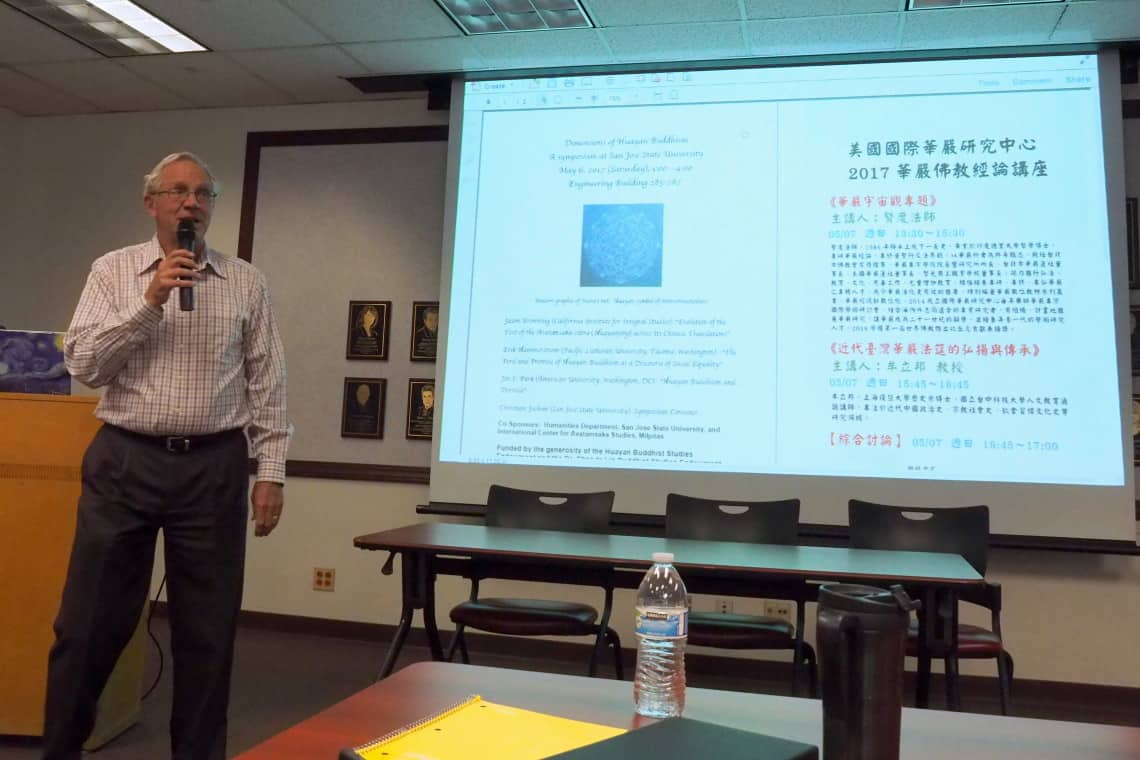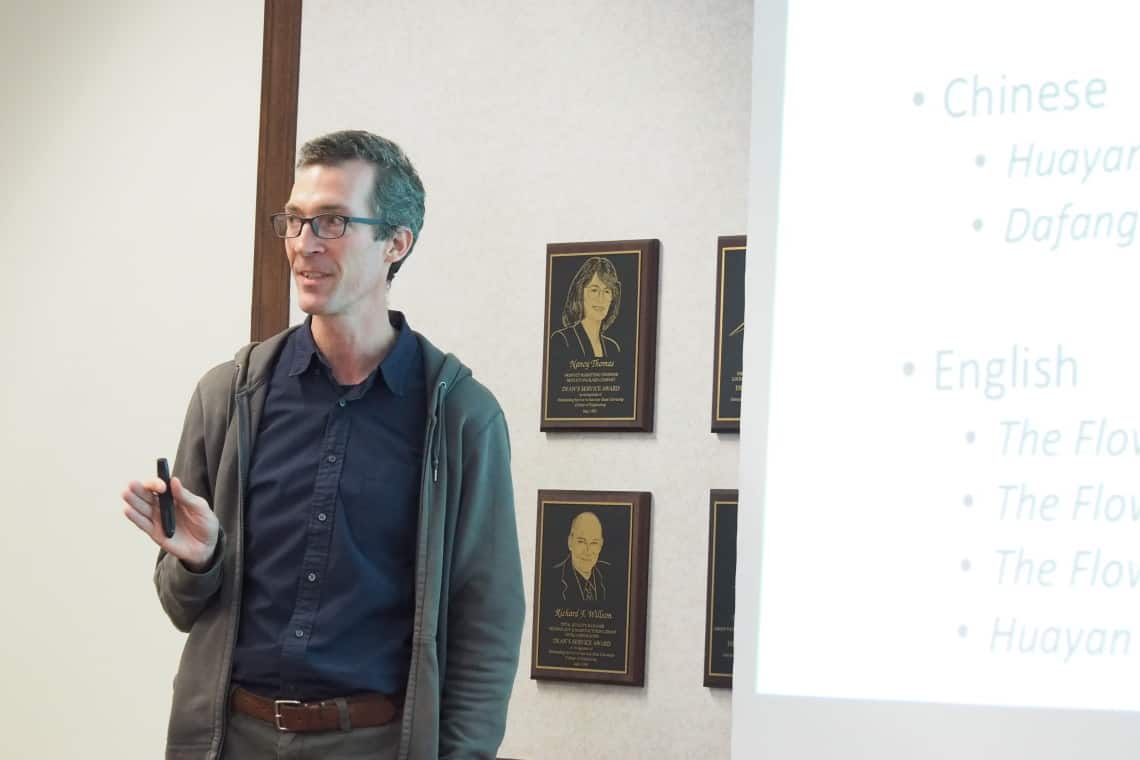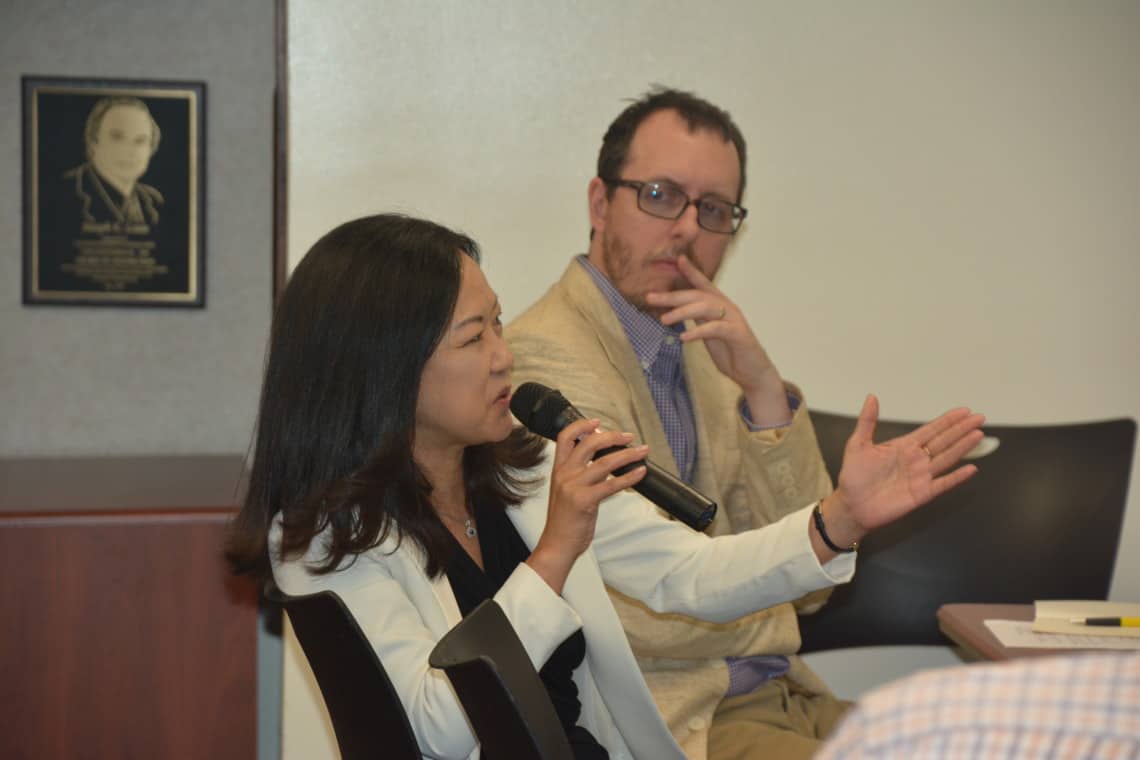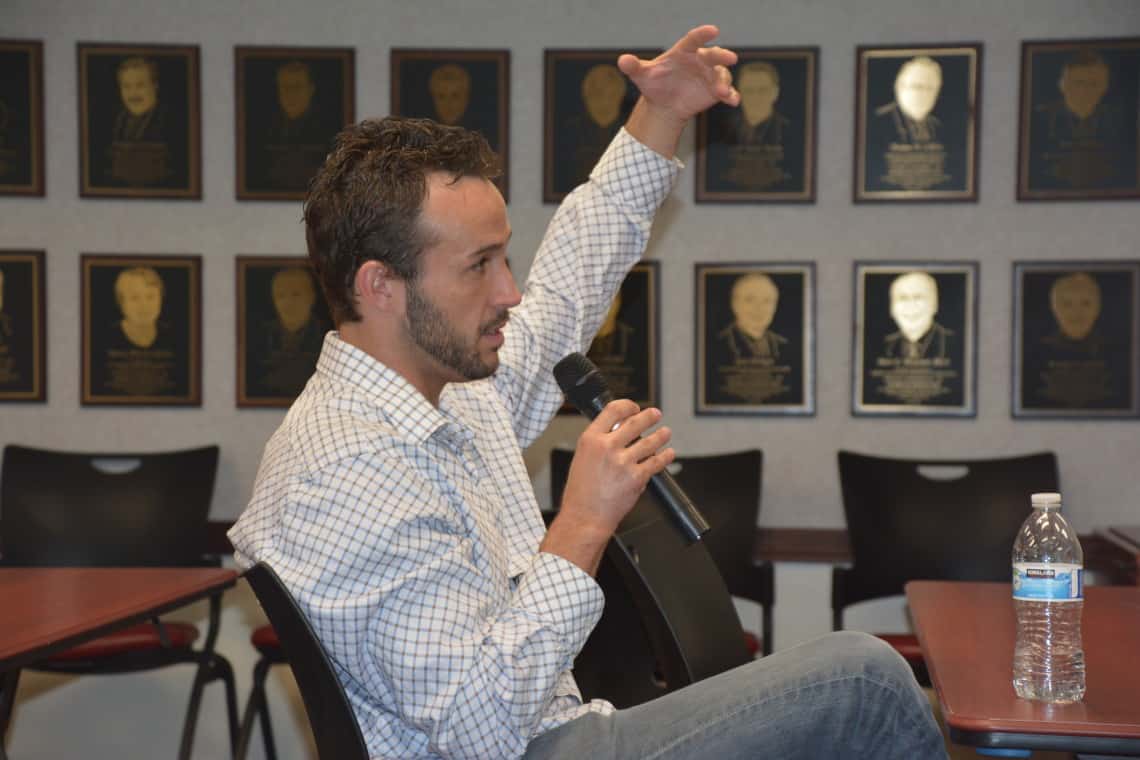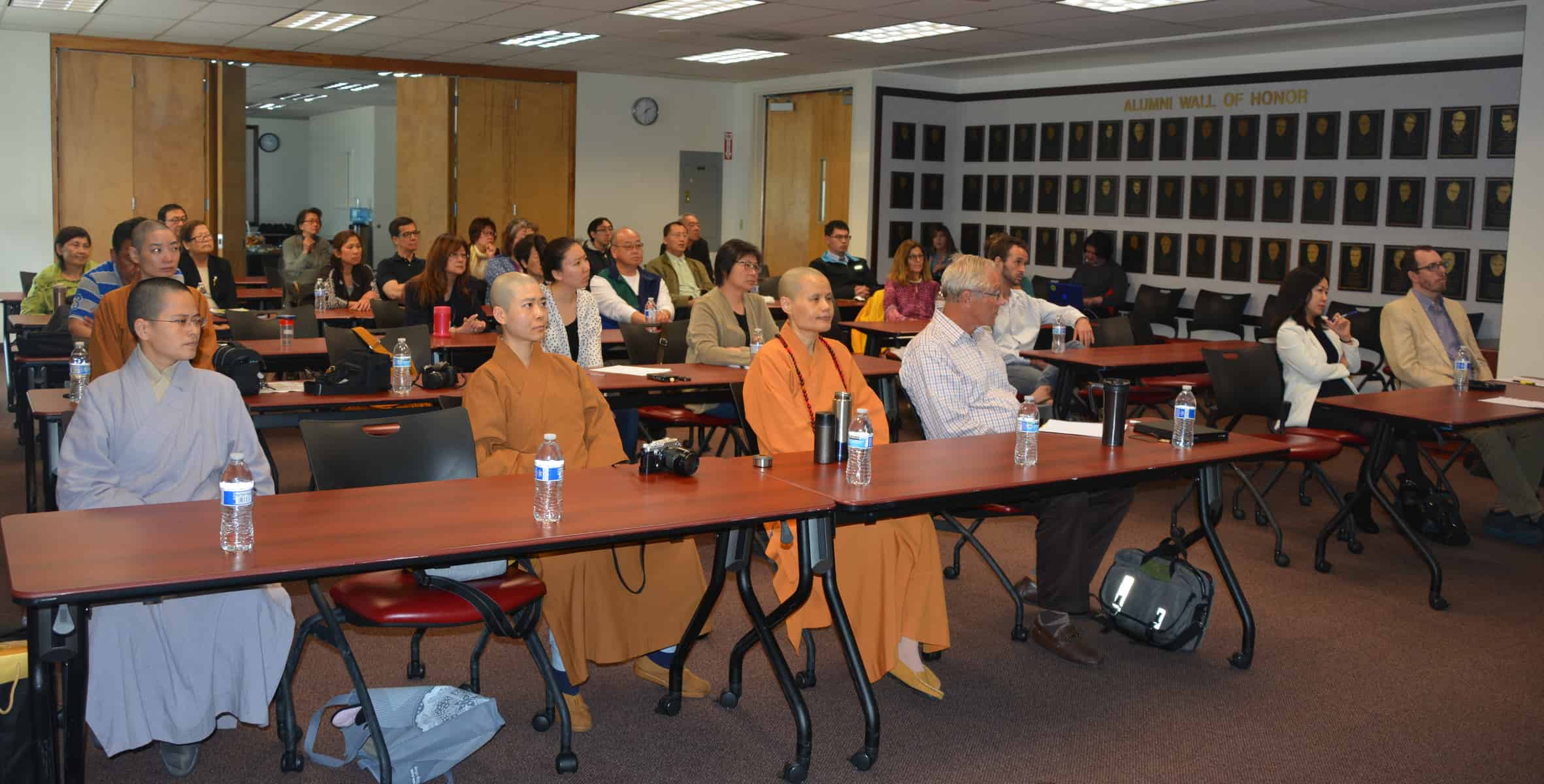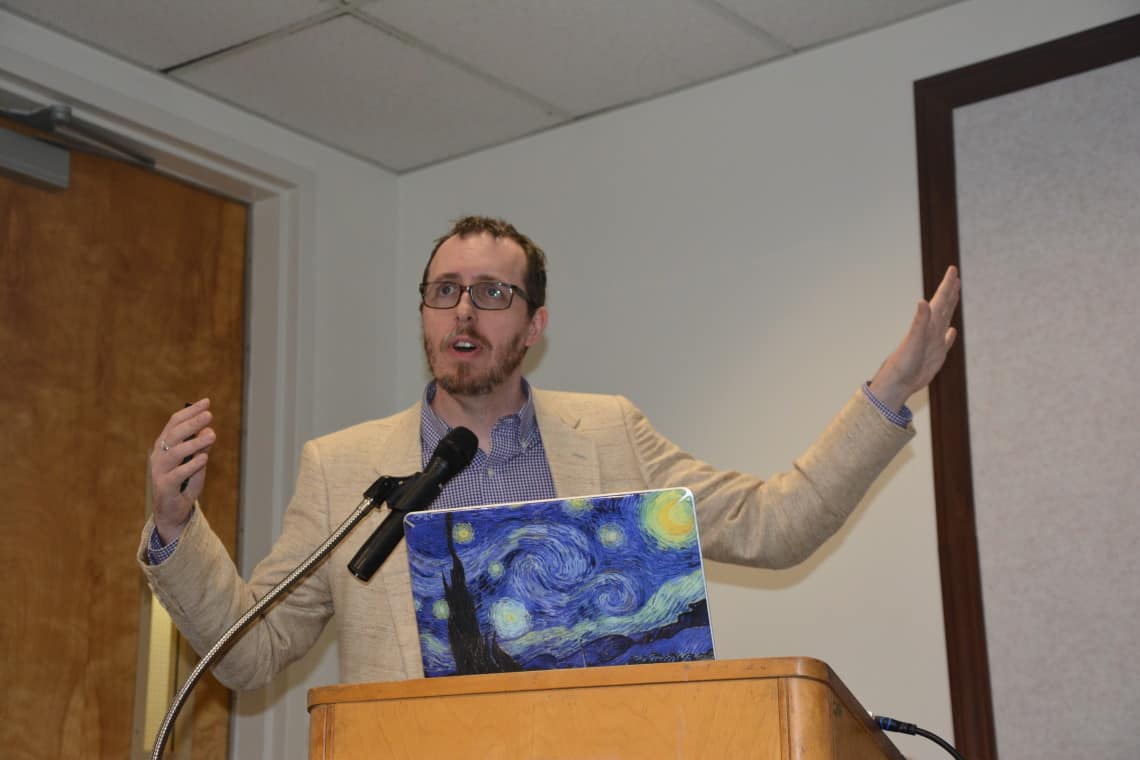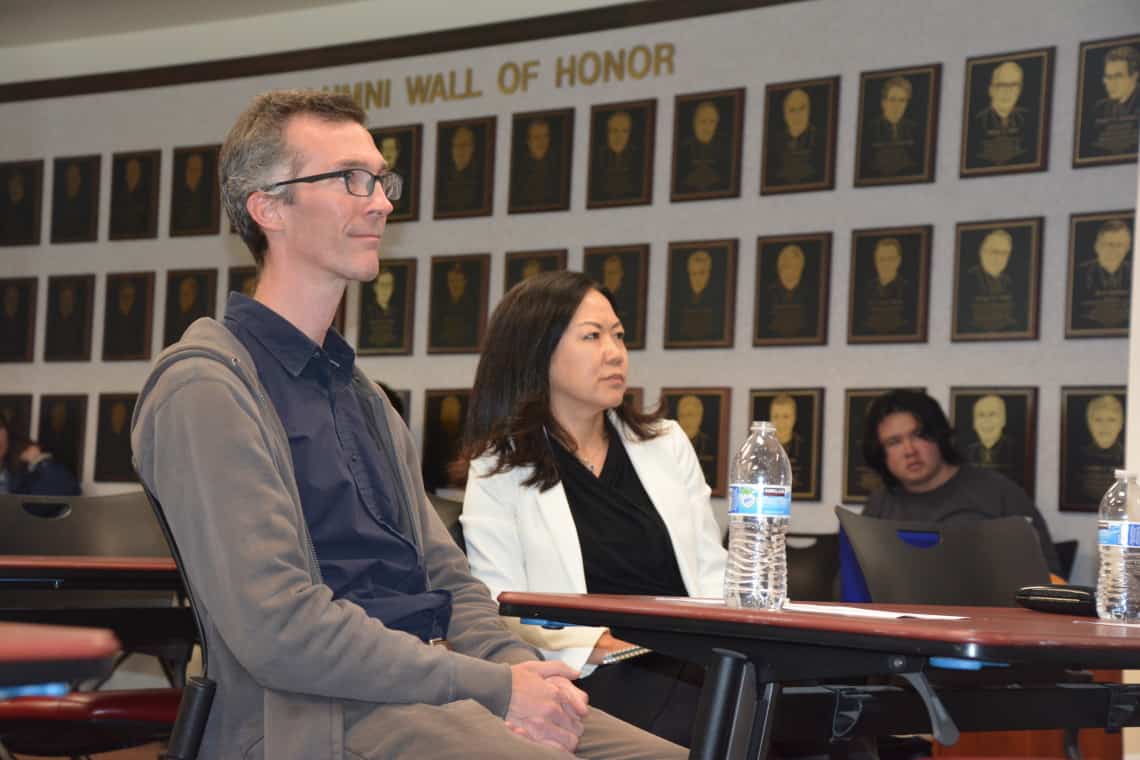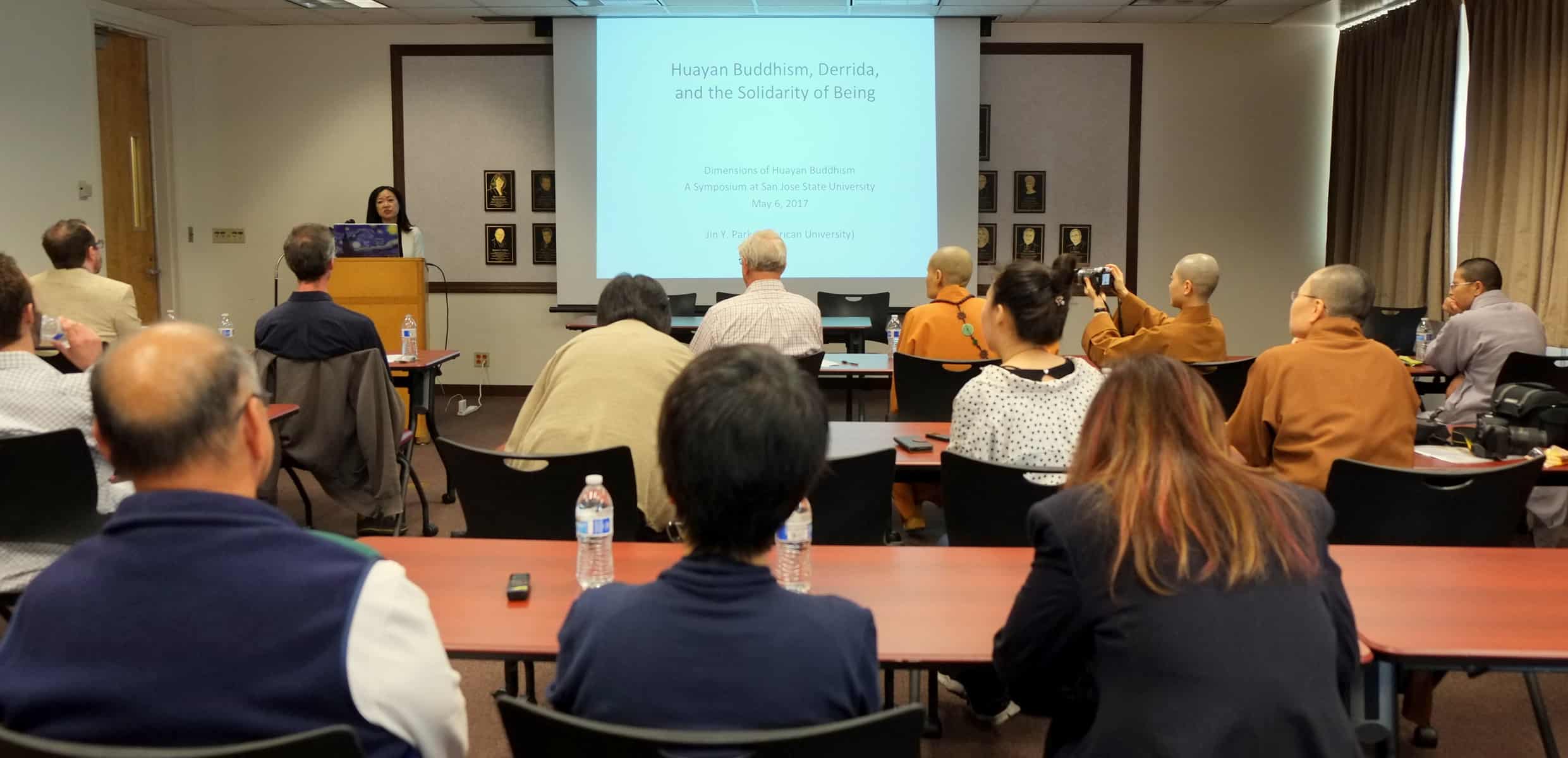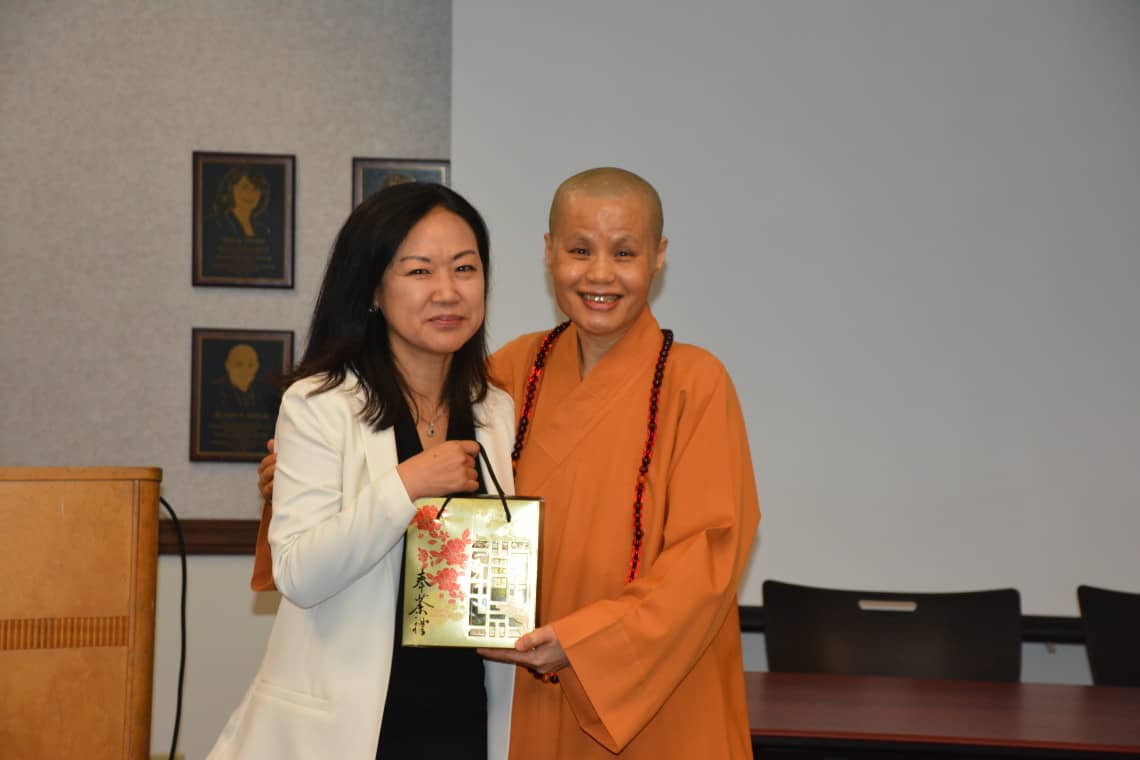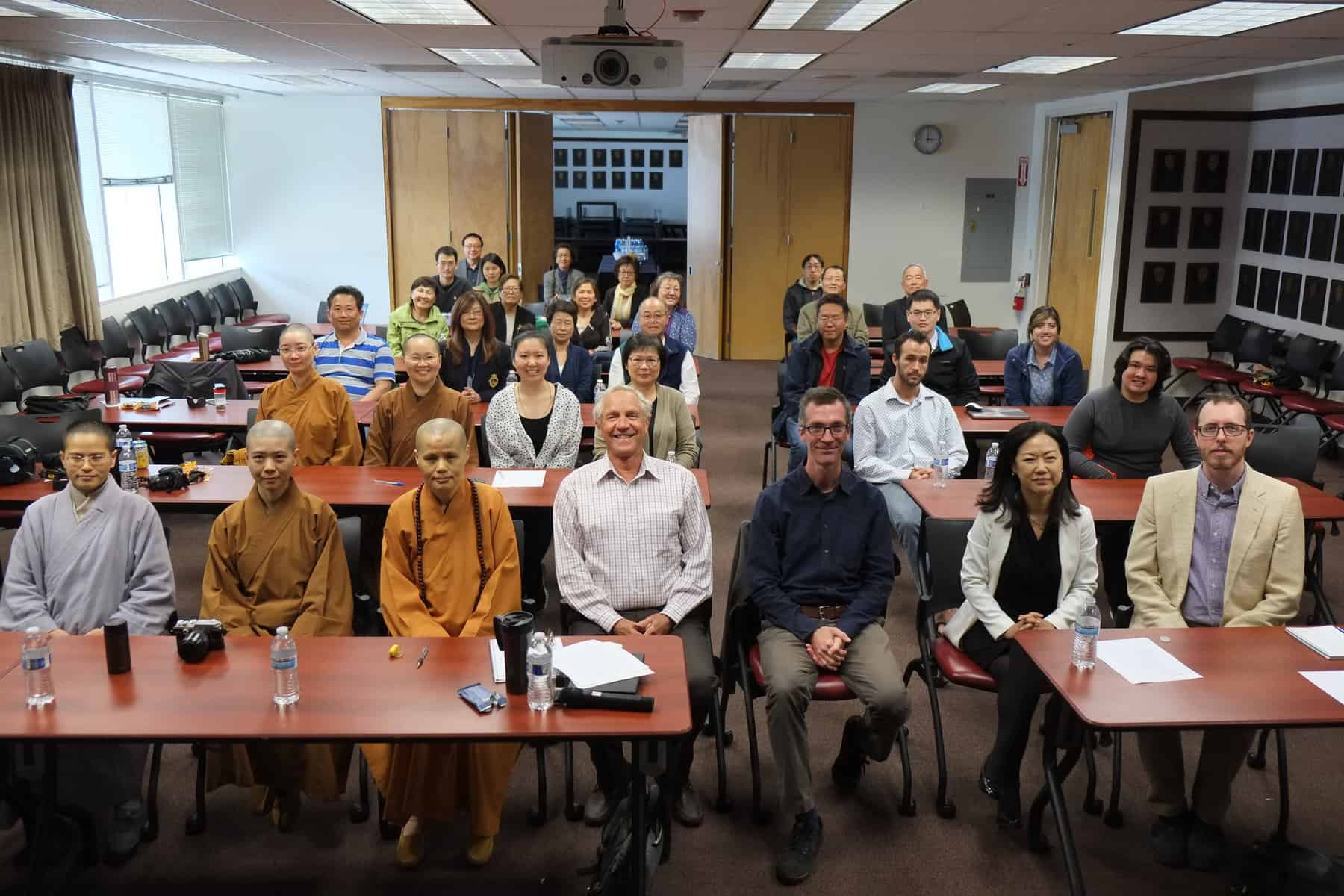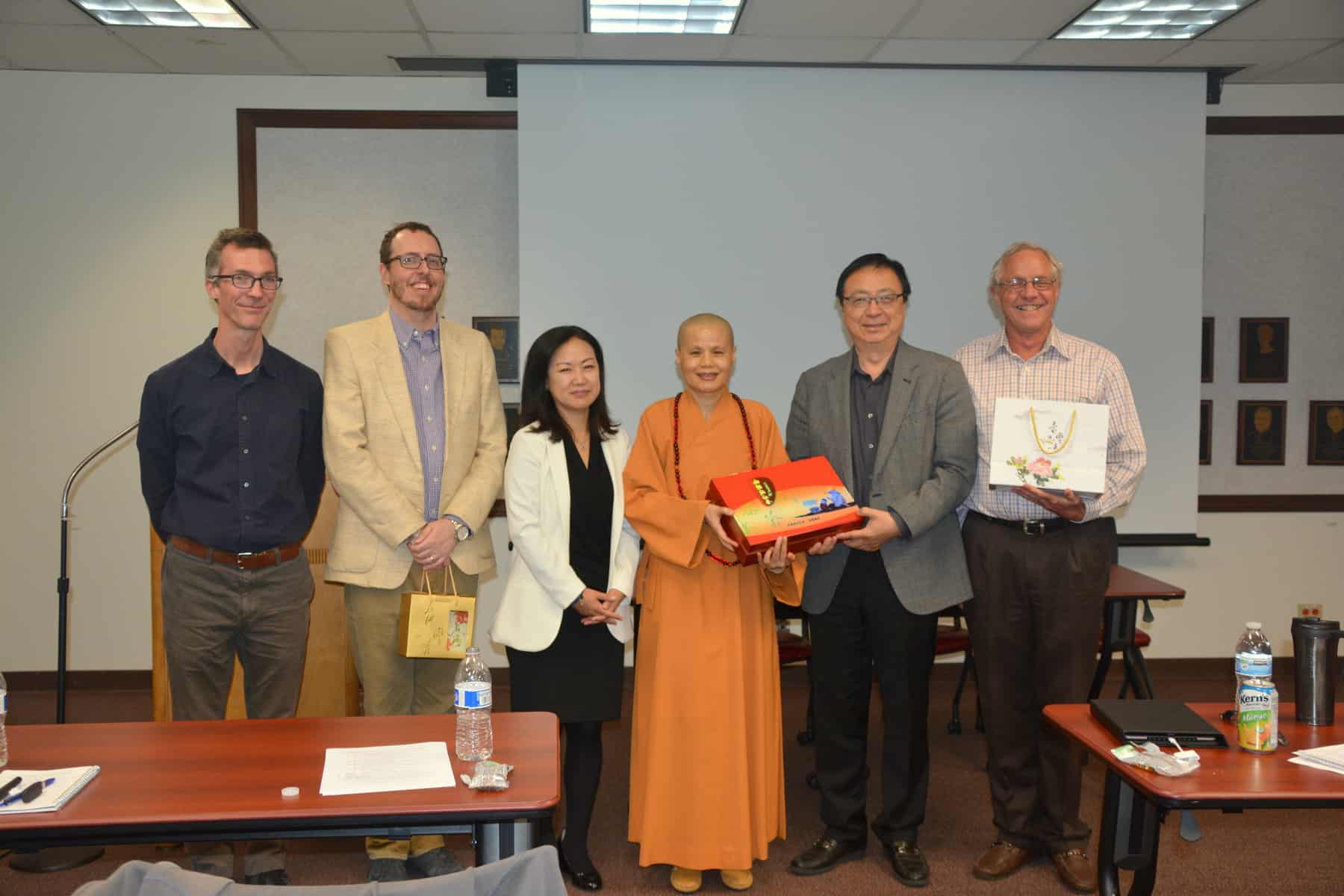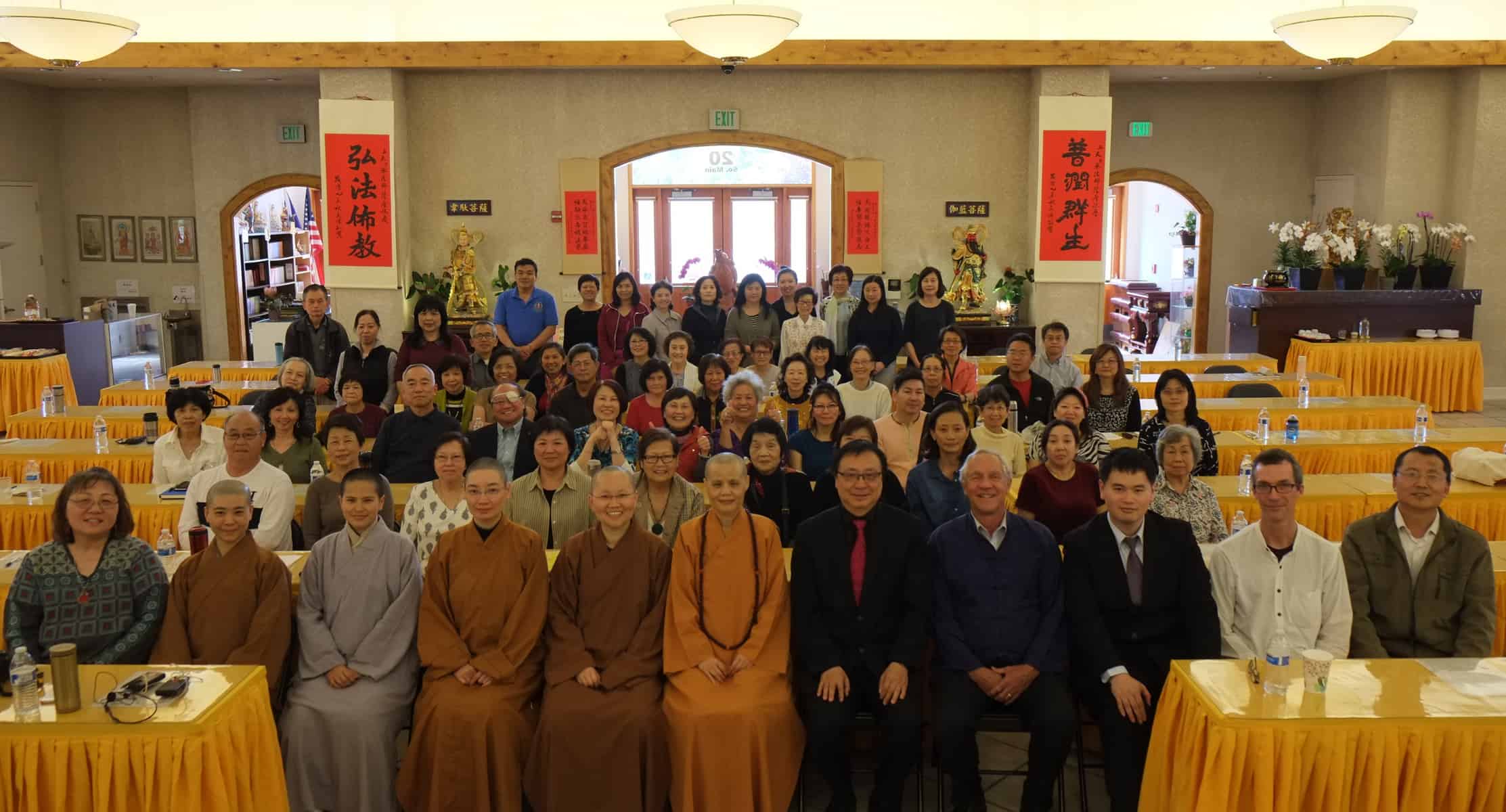
2017 Huayen Symposium at San Jose State University
The Avatamsaka Buddhist Lotus Society (ABLS) hosted an annual symposium on Huayen Buddhism on May 6-7, 2017. The purpose of organizing this event is to provide access to the Buddha Dharma not only for overseas Chinese and second-generation immigrants, but also for native western scholars and practitioners. It has been thirty three years since the ABLS was founded, and by holding this international symposium every year, ABLS hopes to achieve these long-term objectives: promoting the cultural exchange between East and West; building a platform for dialogue between Huayen Buddhism and modern society; cultivating experts in research, practice and propagation of Huayen Buddhism to lay the foundation for the development and transmission of this Buddhist school in western countries.
Dr. Christian Jochim gave a brief introduction to the hosting organizations, as well as the three speakers and their topics
The first part of the 2017 Huayen Symposium took place in San Jose State University (SJSU), California on May 6th. This meeting featured three American scholars who have been not only studying Huayen, but also in certain ways in which overlap with modern western thoughts of various kinds. Dr. Christian Jochim, the Symposium Convener & Professor of Comparative Religious Studies and Director of the Center for Asian Studies at SJSU, gave a brief introduction to the hosting organizations, as well as the three speakers and their topics: Jason Browning, who was going to talk about translation theory and how that might impact his study of translations of Huayen sutra; Dr. Erik Hammerstrom, who would discuss how Huayen Buddhism can contribute to modern thought in the area of ethics; then Dr. Jin Y. Park, who focused on Huayen and post-modern western thoughts of philosophy, particularly the thoughts of Jacques Derrida.
Jason Browning(悟還)from California Institute for Integral Studies was the first to present. His topic was “Evolution of the Text of the Avatamsaka-sūtra (Huayen jing) across Its Chinese Translations”. He adopted both traditional Chinese Buddhist methods and the contemporary western translation theory to explore the evolution of Avatamsaka-sūtra’s Chinese translations.
Jason Browning giving presentation
At the beginning, Browning introduced the Huayen-jing and its different versions of translations, such as longer translations of 60, 80, 40-fascicle Huayen; as well as shorter, partial translations like Fo shuo dousha jing(佛說兜沙經), Pusa benye jing(菩薩本業經)and many more. These various versions bring out an important dispute: whether the Huayen-jing we have is a perfect translation of what the Buddha taught under the Bodhi tree once He attained the ultimate enlightenment. The traditional Chinese Buddhist belief is that there’s no doubt the text is authentic, since it was recovered by Nāgārjuna(龍樹菩薩)after visiting the Naga king in a different realm. Additionally, Browning pointed out that the text was later copied and printed not by movable type but woodblock type, which means that there was little chance that the text was corrupted. In contrast, western scholarship tends to believe that Huayen-jing was put together from many smaller or partial sutras, since that’s how most sutras were formed from Buddha’s varied teachings. Browning argued that this view is problematic because Huayen-jing represents the complete knowledge of what Śhakyamuni Buddha has attained. It was achieved by a direct and sudden realization, and was not targeted towards any particular kind of audiences. In other words, it was the “entire download” of what’s been realized after crossing the final level to becoming a Buddha. In its essence, Huayen is completely different from other sutras, mostly targeted towards the human realm of our world. Nevertheless, Browning acknowledged that concepts from the western translation theory, such as original text, source text (copied version), translated text (translated from various source texts) should be put into use when analysing the translations of Huayen-jing. By tracing back along the text’s evolution, looking into the details of the text across different translations and their historical context, there should be scientific proofs for the belief of Huayen-jing’s integrity.
Dr. Park having discussion with the speaker during Q&A session
Browning then led us through the evolution of sutra translation in ancient China – from oral to text, precision to stylized. Since the process of translation itself is diverse and evolving, the issue still remains whether the text is a perfect translation. Browning brought up some western thinkers whose theories shed light upon this argument. For instance, David Bellos argues that translation is more like transmission: instead of translating words, it gives us access to the real meaning of the original text. Frederick Streng deepens this view in the realm of religious text, which not only transmits knowledge, but has the power of transforming audiences. This view corresponds to what the Buddha taught over and over again, about focusing on the moon instead of the finger pointing to the moon. In this case, there’s no doubt Huayen-jing is an enlightened text no matter what translation process it went through. Still, to answer whether it is a perfect translation, Browning introduced the theory by George Steiner, who claims that perfect translation simply cannot be achieved, since people have no exact common ground to make sure the meaning they receive from the text means exactly the same. Regardless, Browning raised the fact that radical insights in Buddhism are obtained by samati, and this may indeed be the common ground for precise understanding that cannot be achieved in a normal sense.
Audience asking questions after Browning’s presentation
Browning started the symposium by a strong presentation. In addition to examining the critical issue of sutras’ Chinese translations through a western scientific perspective, he also integrated the religious belief system into the otherwise merely historical analysis. His research can serve as a bridge between the western scholarly thought system and the Eastern intuitive religious belief system.
The Audience at 2017 Huayen Symposium in SJSU
Coming to the stage next was Professor Erik Hammerstrom(韓光)from Pacific Lutheran University, Tacoma, Washington. He presented the “Peril and Promise of Huayen Buddhism as a Discourse of Social Equality”. At the beginning, Dr. Hammerstrom raised an important issue of social equality facing the contemporary society, especially the U.S. where races, beliefs, and social classes of many kinds coexist. Dr. Hammerstrom presented two Buddhist monks from early 20th century who were using Huayen to resolve these social problems.
Dr. Erik Hammerstrom giving presentation
One was Ven. Changxing(常惺法師), who employed the lens of “Ten Profound Perspectives”(十玄門)to look at his era of great social disturbance such as colonialism and conflicts. In particular, Ven. Changxing views the world as the world of Indra’s net(因陀羅網), Huayen symbol of interconnectedness, that everyone and everything is interconnected. Another point of view Ven. Changxing took was the third perspective: “The one and the many contain each other without being the same”(一多相容不同門), and Dr. Hammerstrom further argued these two views of mereology once again imply social equality, such as the equality of class and economic status, etc. At the same time, another Buddhist monk, Kametani Seikei, was also using Huayen Buddhism picturing a society of equality. However, under the influence of Kyoto school, Seikei sees the future of equality to be under the unity of Japanese Empire. He also considers the Japanese Emperor to be Vairocana Buddha(大日如來), and how unity works is in the way of fascism. Therefore, Dr Hammerstrom raised the concern of the danger of using Huayen Buddhism as a discourse of social equality.
Jason Browning (L) and Jin Y. Park (R) at 2017 Huayen Symposium
During the Q&A session, Master Hsien Du(賢度法師), Dean of Huayen College and President of Huayen Lotus Association, pointed out that the Huayen equality means all sentient beings have the Buddha nature. The implication is that the true equality is achieved not by eliminating all the differences, but by achieving enlightenment and realizing the Buddha nature within each one of us. As Dr. Hammerstrom later specified that the exploitation of Huayen comes from the greed, aversion, and delusion of human beings. And it is the Buddhists’ responsibilities to defend the real meaning of Buddha’s teaching.
Following Dr. Hammerstrom’s discussion on social equity, Professor Jin Y. Park(朴眞暎)from American University took a closer look at the core of social issues: how we consider ourselves relating to each other. The dominant world view is individuality, which Dr. Park sees as problematic based on her study of Huayen Buddhism as well as one of the most well known twentieth century philosophers, Jacques Derrida.
Dr. Jin Y. Park giving presentation
In Huayen worldview, the individuals “are always already connected with multi-layers of others”, as Dr. Park explained by presenting import work of patriarchs, such as Dushun(杜順), Fazang(法藏), and Ŭisang (義湘), the founder of Korean Huayen Buddhism. The concept of interconnectedness is shared by an important western philosopher, Derrida, yet he explained it using a different system. For example, one’s identity is made through “difference” from others. And even with others’ absence, their presence is still in one’s identity as a “trace”, and all these exist in the“text”or [con]text, similar to the Indra’s net. Dr. Park further explained Derrida’s concept of “violence”, which is rooted in people’s belief of independency and it can further lead to suffering. Dr. Park made clear that the existence of “violence” or conflicts is well recognized in Huayen, notably they are considered to be particularities (phenomena). When particularities seem to obstruct each other, there is another layer of the reality-realm, the world of principle (noumenon), which includes everything without any obstruction. Then the contemplation of noumenon and phenomena with both wisdom and compassion is regarded as a core practice in Huayen and a responsibility for Derrida.
Master Hsien Du giving a present to Dr. Jin Y. Park
Professor Park closed the symposium with a great discussion of the comparative analysis between huayen and western thoughts. Especially western philosophers tend to “be strong in offering social political philosophy”. And this reminds us that Huayen, representing the ultimate wisdom of worldview, can take that social responsibility as well. That is guiding the human society towards a better place with people having a deeper understanding of the solidarity of beings.
Group photo of people attending 2017 Huayen Symposium at SJSU
At the end, Master Hsien Du, representing sponsors of this event, gave each presenter and organizer a gift from Taiwan as a token of appreciation, wishing a bright future for the study and promotion of Huayen Buddhism in the U.S.
Master Hsien Du with presenters and organizers
Dimensions of Huayen Buddhism
A symposium at San Jose State University
May 6, 2017 (Saturday), 1:00 – 4:00
Engineering Building 285-287
-
Jason Browning (California Institute for Integral Studies): “Evolution of the Text of the Avataṃsaka-sūtra (Huayenjing) across Its Chinese Translations”
-
Erik Hammerstrom (Pacific Lutheran University, Tacoma, Washington): “The Peril and Promise of Huayen Buddhism as a Discourse of Social Equality”
-
Jin Y. Park (American University, Washington, DC): “Huayen Buddhism and Derrida”
-
Christian Jochim (San Jose State University), Symposium Convener

